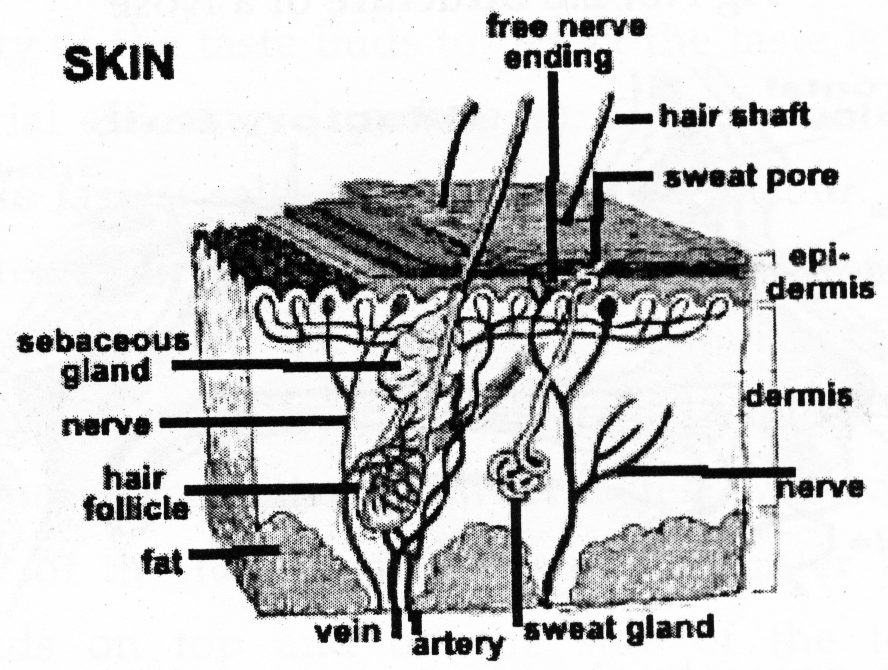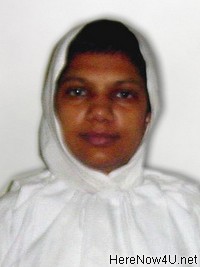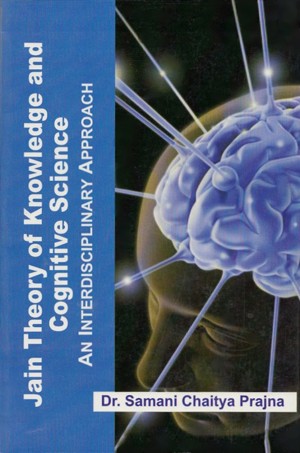Fig No. 2.9.Structure of the Skin

The sense of touch is distributed throughout the body. Nerve endings in the skin and other parts of the body transmit sensations to the brain. Some parts of the body have a larger number of nerve endings and therefore, are more sensitive. Four kinds of touch sensations can be identified: cold, heat, contact and pain. Hairs on the skin magnify the sensitivity and act as an early warning system for the body. The fingertips and the sexual organs have the greatest concentration of nerve endings and more sensitive.[43]
In addition to sight, smell, taste, touch and hearing, humans also have awareness of balance, pressure, temperature, pain, and motion all of which may involve the coordinated use of multiple sensory organs. The sense of balance is maintained by a complex interaction of visual inputs, the proprioceptive sensors (which are affected by gravity and stretch sensors found in muscles, skin, and joints), the inner ear vestibular system and the central nervous system. Disturbances occurring in any part of the balance system or even within the brain's integration of inputs, can cause the feeling of dizziness or unsteadiness. [44]
Recently, it is concluded that the body has several senses that allow it to perceive its surroundings. The five basic senses are sight, sound, touch, taste and smell. Other external senses include pain, temperature, position, and movement. Although we can selectively perceive the information received through our external senses, we are typically unaware of our internal senses. These senses are involved in the detection and regulation of internal functions of the body. Many identify nine or more senses-some listing as many as twenty-one. The first category of senses is the 'special' senses, including the familiar sight, hearing, taste, and smell. The second category is made up of the somatic senses, which we usually lump under 'touch'- including our perception of pressure, heat, and pain. The third category, however, is not nearly as well-known. These are the interceptive senses- those that deal with data originating in the body itself. According to Jain texts like Prajñāpanā Sutra[45] senses are only five in number.
If any one of the external senses is absent or limited, other senses may improve to compensate for the lack elsewhere. A blind person may develop acute hearing and more sensitive touch. When a limited sense restricts daily activity, it is considered a disability.
Of the five senses, the power of cognition is the greatest in the sense of seeing. It can perceive the object without touching the object. The power of cognition in the sense of hearing is lesser than it. It is less than in the sense of seeing as it perceives the sound only after touching the matter of sound. The power of cognition in the rest of the three senses is even lesser than it is in the sense of hearing as they cannot perceive the matters of smell and taste etc. only by touching them but the soul perceives them through assimilation of them into its own space points. It is only after this that the senses of smell and taste come to know of their objects.[46]
 Samani Chaitya Pragya
Samani Chaitya Pragya

